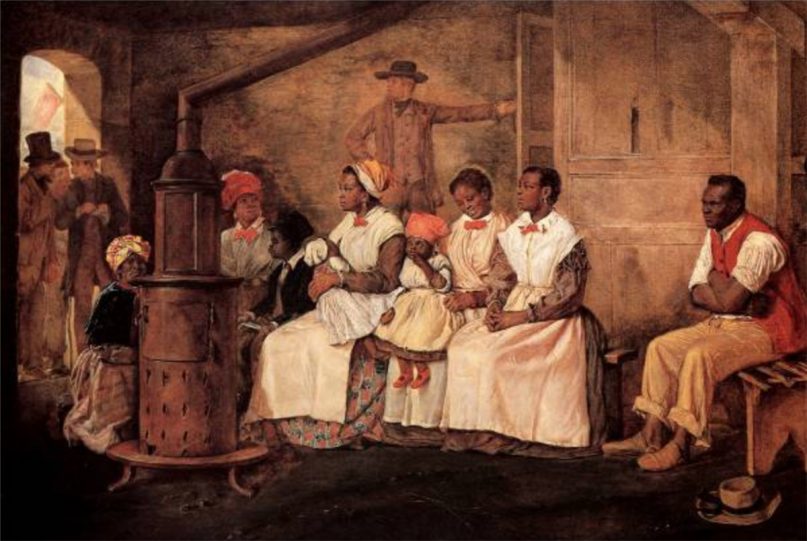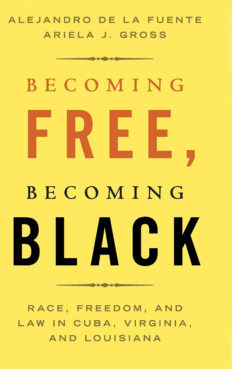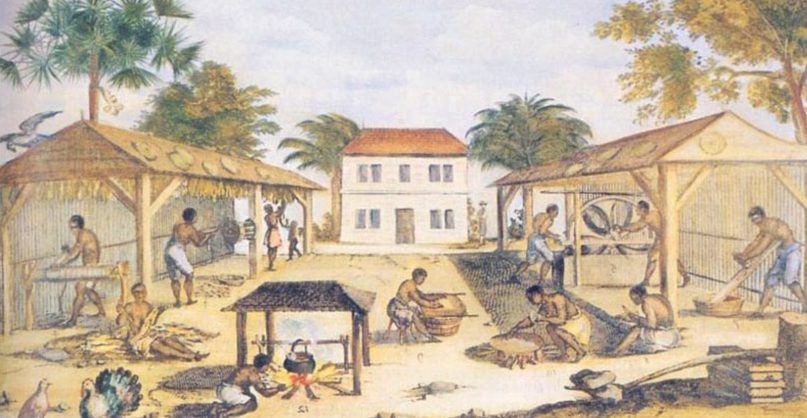(RNS) — By the time the English settled Virginia in the early 17th century, the enslavement of Africans had already spread across the New World. Yet the colonists in Virginia, lacking the direct cultural and legal references of their Spanish and French counterparts to the south and north, had no clear body of slave law to rely on.
Indeed, the early Virginians were uncertain about many of the basic rules regarding slavery. It was not until 40 years after the first enslaved people arrived in Virginia that the first direct reference to “negroes” as slaves appeared in law, in a 1659 statute imposing reduced import duties on slave merchants.
As the century went on, however, white colonists grappled with how to define the status of Africans. The fledgling legislature dealt with such basic questions as whether enslavement was a permanent and inheritable condition, how slave status would be transmitted to children and whether Christian baptism was compatible with enslavement. Beginning in 1680, new laws began to draw a closer connection between race and status, establishing more firmly the debased status of people of African origin.
This new racial regime may well have been a response to the rising population of free people of color: As many as one-third of the people of color in some Virginia counties in the late 17th century were free, and white elites increasingly feared the formation of political alliances among white indentured servants, free black people and Indians.
The first question white Virginians addressed was whether the condition of slavery would be inherited. In 1662, the Virginia General Assembly adopted the rule of partus sequitur ventrem, already universal in other parts of the Americas, that a child’s slave or free status would follow the condition of the mother.
The assembly members explained, “Whereas some doubts have arisen whether children got by any Englishman upon a negro woman should be slave or free, Be it therefore enacted and declared by this present grand assembly, that all children born in this country shal[l be] held bond or free only according to the condition of the mother.”
This measure turned against traditional English doctrine, which held that the status of the child was determined by the status of the father.

“Slaves Waiting for Sale — Richmond, Virginia” painting by Eyre Crowe in 1861. Image courtesy of Creative Commons
At the same time, the 1662 law went on to double the fine for fornication if it occurred between a “Christian” and a “negro man or woman.”
The differentiation between “Christian” and “negro” would grow as time went on. At least some of the black people living in early Colonial Virginia were Christians who claimed rights and even freedom on that basis. Fearing these Christians might demand privileges and rights, slaveholders became reluctant to baptize enslaved children,
For example, in 1644 Manuel, a “mulatto,” sued for his freedom on the basis of his Christianity, and in 1661 the Indian boy Metappin was freed, “he speaking perfectly the English tongue and desiring baptism.” Elizabeth Key, the daughter of a white man and an African mother, made Christianity a fundamental part of her 1654 freedom claim, which she won “that by report shee is able to give a very good account of her fayth.”
In response, a 1667 law severed the link between Christianity and freedom, decreeing that baptized slaves would not be “exempt … from bondage.”
Three years later, the legislature added the further restriction that “noe negroe or Indian though baptised and enjoyned their owne ffree- dome” would be allowed to buy Christians, although they could buy “any of their owne nation.”
The slave code of 1705 reiterated that conversion would not emancipate a slave:
All servants imported and brought into this country, by sea or land, who were not [C]hristians in their native country, (except Turks and Moors in amity with her majesty, and others that can make due proof of their being free in England, or any other [C]hristian country, before they were shipped, in order to transportation hither) shall be accounted and be slaves, and such be here bought and sold notwithstanding a conversion to [C]hristianity afterwards.
By the beginning of the 18th century, then, conversion of slaves guaranteed freedom no more than it traditionally had in the Catholic Mediterranean world, where baptizing slave children was customary and where prominent theologians had ruled that baptism affected sin, “but not the circumstances or obligations of men.”
Not all African people were slaves, however. The first clear statutory racial distinction among free people was a 1668 law proclaiming that “negro” women were not exempted from the head tax because, though free, they “ought not in all respects to be admitted to a full fruition of the exemptions and impunities of the English.”
The legislature was careful to make distinctions between “negroes” and other people of color. It clarified that non-Christian servants who arrived in the colony “by shipping” became slaves for life, whereas those who arrived on land — namely, Indians — would be indentured servants.
For all this, racial status was still unsettled as late as 1695, when William Catilla won his freedom because he was “the son of a free woman” and “baptized in the Christian faith.” Free man of color John Johnson gave testimony in Somerset County court in 1674 after giving assurance that he was Christian and “did rightly understand the taking of an oath.”
But the lines were being drawn more sharply. In 1672 Virginia’s first comprehensive act for apprehending and suppressing “runaways, negroes, and slaves” was passed. A 1680 statute complained about “the frequent meetings of considerable numbers of Negro slaves under pretense of feasts and burials” and determined that “no Negro or slave may carry arms.”
The same statute prescribed severe punishments, even death, for “any Negro [who] lift up his hand against any Christian.”

“Becoming Free, Becoming Black” by Alejandro de la Fuente and Ariela Gross. Courtesy image
By establishing a clear and rigid distinction between “negro” and “Christian,” the act of 1680 also exemplified how the legislature continued to navigate thorny questions of slaves’ conversion to Christianity and the enslavement of co-religionists.
The slave code of 1705 offered detailed instructions for how to feed, clothe and care for servants: “That all masters and owners of servants, shall find and provide for their servants, wholesome and competent diet, clothing, and lodging, by the discretion of the county court; and shall not, at any time, give immoderate correction.”
But the 1705 code also made it illegal to “whip a [C]hristian white servant naked,” an extension of rights that shows how, by the turn of the 18th century, Christianity and whiteness had become a sign of privilege.
(This article is adapted from the forthcoming book “Becoming Free, Becoming Black.” Alejandro de la Fuente is the Robert Woods Bliss Professor of Latin American History and Economics and Professor of African and African American Studies at Harvard University. Ariela Gross is the John B. & Alice R. Sharp Professor of Law and History at the University of Southern California. The views expressed in this commentary do not necessarily reflect those of Religion News Service.)





